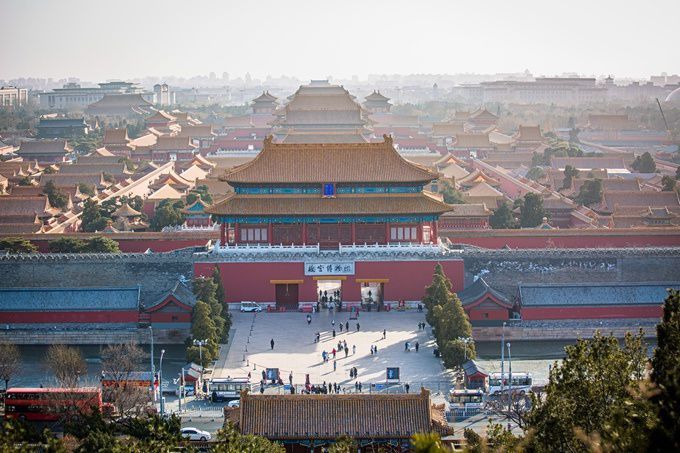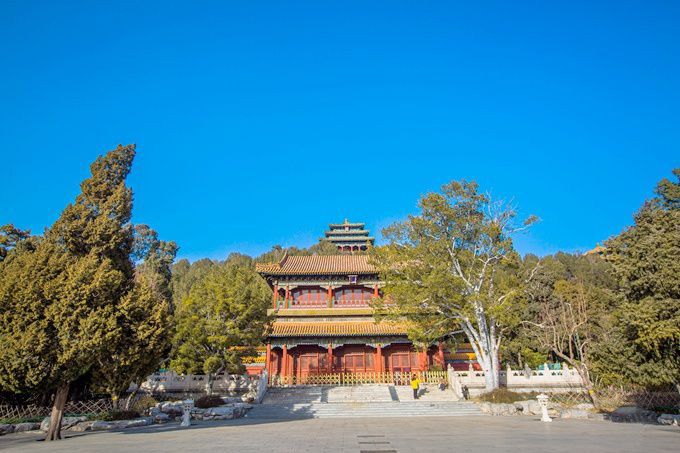Jingshan Park is an imperial park. The focal point is the artificial hill Jingshan. Formerly a private imperial garden attached to the grounds of the Forbidden City, the grounds were opened to the public in 1928. The park was formally established in 1949. The park stands on the central point of the south-north axis of the city and faces the north gate of the Forbidden City. Looking from the peak, the visitor is able to get a full and clear view of the Forbidden City.
The artificial hill Jingshan has a different meaning to beijing city, the 45.7-meter high artificial hill was constructed in the Yongle era of the Ming dynasty entirely from the soil excavated in forming the moats of the Imperial Palace and nearby canals. All of this material was moved by manual labor and animal power. Jingshan Hill was originally named Wansui Hill (Long Live Hill).
The Chongzhen Emperor, the last ruler of the Ming dynasty, committed suicide by hanging himself from a tree in Jingshan in 1644 after Beijing fell to Li Zicheng’s rebel forces.
Jingshan Hill consists of five individual peaks, and on the top of each peak there lies an elaborate pavilion. These pavilions were used by officials for gathering and leisure purposes.
At Wanchun Pavilion, The Forbidden City is in sight. Nowadays new Jingshan Street between Jingshan Park and Shenwu Gate of the Forbidden City is a sea of people and traffic, however, if you go back to the Ming and Qing Dynasties, here was the forbidden area of the imperial palace. A gate separated the royal family from the civilian.
The Emperor Kangxi also climbed up to the top of Jingshan, he looked around the surrounding scenery and wrote a poem about Jingshan.
Overlooking the city, you will feel that Beijing is full of wonder. Here there are not only many simple ordinary courtyards, but also some glorious palaces; here there are not only many modern high-rise buildings, but also some the former dynasty ancient buildings. Time is brewing and fermenting in a city, it gives off an addictive taste.
Viewed from Jingshan, the White Dagoba is still beautiful. Her beauty does not show off and comes from simple and unadorned temperament. It was so then, and it remains so today.
on the central north-south axis, we can see Drum Tower in the distance, from the red walls and golden roof tiles to the high-rise buildings, various building types form a complete Beijing’s historical context before our eyes.
There is also a Guandi Temple on the north side of the east gate of Jingshan Park, it is often overlooked by many tourists who come here. The Guandi Temple was built in the Ming Dynasty, also known as Huguo Zhongyi Temple. There are two courtyards arranged on the axis, dedicated to the Divus Guan (“Guandi”) and the True Warrior Great Deity (“Zhenwudadi”) respectively. The entire exhibition aims to highlight the spiritual connotation of Guan Yu‘s loyalty and bravery, and showcases the excellent traditional Chinese culture.
Compared with the opposite Forbidden City and the nearby Beihai, Jingshan is inconspicuous. But if you come to Beijing, you must go to Jingshan, otherwise, you never know how beautiful the scenery of Beijing is.

